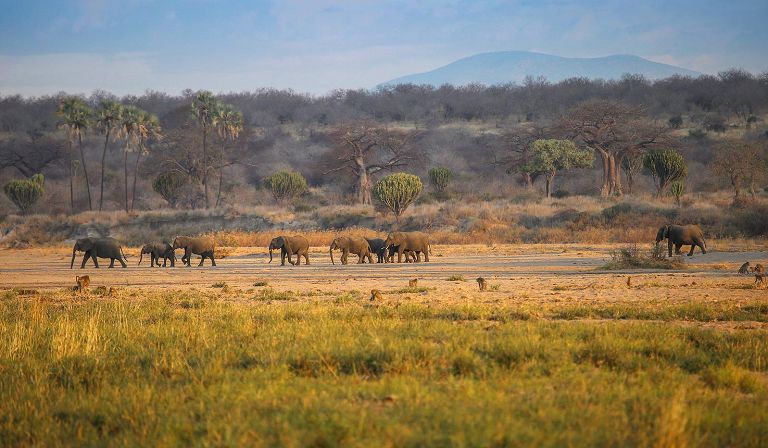How Many Square Miles Does the African Savanna Cover
African Savana has been one of the most tourist sites in Africa and in this article, we shall be telling you why it is so as we shall be discussing everything there is to know about the African savanna.
About the African Savanna
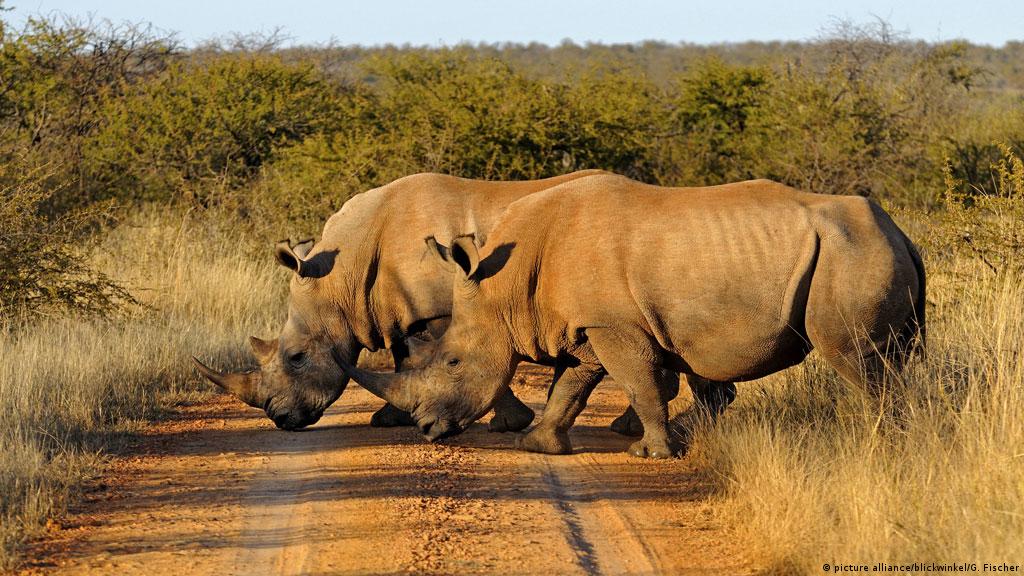
The savanna is a beautiful and enticing place where everything happens. Big cats clash with terrified herds. Giant four-legged beasts march and migrate.
Epic African safaris put you up close and personal with savanna animals.
But what exactly is an African savanna? What makes it unique and why is it so important?
Where can you go to explore the savanna, and why is this landscape so unique?
In this article, we delve beneath the ochre-colored dirt to explore the African savanna’s depths.
Continue reading to learn why the savanna is essential to Africa’s incredible wildlife population, which includes all animals and plants.
What is a Savanna?
Savannas can be found all over the world, not just in Africa. Savanna accounts for one-fifth of all land on Earth.
In comparison, rainforests cover less than 3% of the earth’s surface!
A savanna is an ecosystem (or habitat) that comprises grassland and woodland. It’s a place with trees, but not enough to form a dense canopy.
The canopy distinguishes forests and true woodlands. Trees crisscross and block light from reaching the ground.
If you visit a jungle or tropical rainforest, you will encounter a gloomy and humid world. The savannah, on the other hand, is flooded with light.
Trees are scarce in some savannahs. There are simply not enough of them to make a canopy.
However, because there are some trees, these savannahs can support a broader range of wildlife.
Other savannas have many trees, but they are in small clumps. They look like a jumble of grass and trees.
That means there will be space for both browsers and grazers.
Some savannas have up to 80% tree coverage, while others have as little as 5%.
The African Savannah Biome

Except for Antarctica, they can find Savannahs on every continent. But they found the biggest and wildest in Africa, the epicenter of all evolution.
The contrasts between the dry and wet seasons are stark.
During March and April, for example, the Serengeti National Park receives nearly 300 mm of rain.
However, there is less than 30 mm from June to August.
From June to August, the South African Kruger National Park experiences three months without rain but averages 90 mm per month from December to February.
African savannas differ from those on the other five continents due to two factors.
Foremost, Africa has preserved its savannas. In less than a century, an epic grassland savannah in America became agricultural land.
In Australia, they cut trees down to make way for livestock and crops.
Africa is the continent with the most unexplored wilderness. Local tribes and communities have coexisted with nature.
As a result, rather than clearing the savannah for farmland, they have preserved natural space.
By preserving the space, you are preserving habitat for wildlife. And it’s the animals that make the African savannah truly unique.
READ ALSO:
- Food Stamp Balance Number
- Classic Spanish Paella Recipe
- Does Stew Leonards Accept EBT?
- Does Casey & Take EBT?
- Southern Seafood Boil Recipe
African Savanna Animals
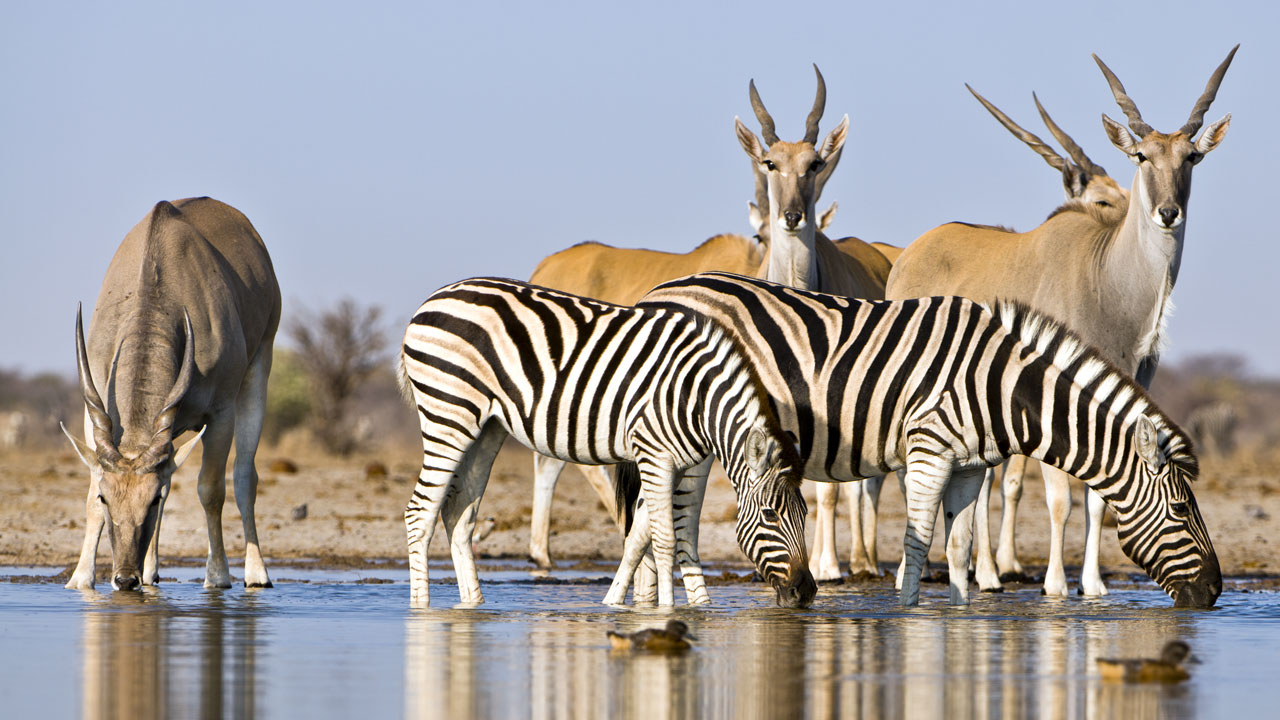
The African savannah has more wildlife than any other place on the planet. Nowhere else on the planet has such a diverse range of life as Africa.
The savannah attracts grazers, browsers, and carnivores uniquely.
Grazers, of course, come for the grass.
Browsers, such as giraffes picking leaves from the highest branches and black rhinos hooking their upper lip into trees, feed on high-growing vegetation.
The herbivores all help the carnivores.
This article on African animals can provide you with more information on the various species found on the continent.
You can also click on the links to learn about fascinating stories and facts about African wildlife.
For the time being, here’s an overview of how the African savanna supports various animals.
In Australia, they cut trees down to make way for livestock and crops.
Africa is the continent with the most unexplored wilderness. Local tribes and communities have coexisted with nature.
As a result, rather than clearing the savannah for farmland, they have preserved natural space.
By preserving the space, you are preserving habitat for wildlife. And it’s the animals that make the African savannah truly unique.
Large Land Mammals
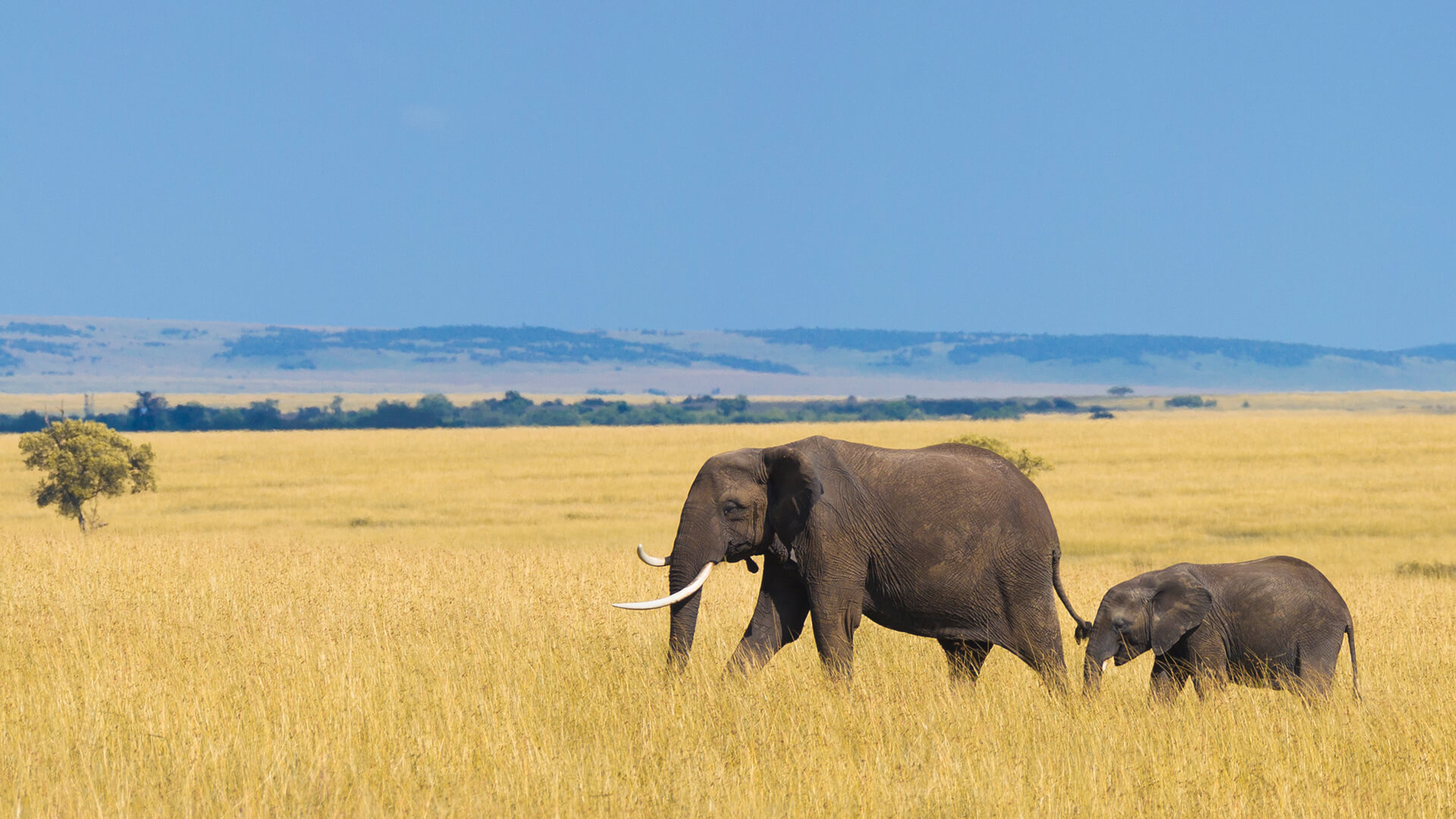
Elephants, for example, require a lot of space. They also require an enormous amount of food.
Did you know that elephants can consume over 250 kg of food per day? Because they eat both grass and trees, they are the archetypal savannah animal.
African elephants eat bark, twigs, and foliage by chomping through the tall grass and bashing their way into trees.
Grazers include Cape buffalo and white rhinos. Giraffes are voracious browsers. Their diets are vastly different, but they can coexist in the African savannah.
Many of Africa’s largest antelope species, including kudu, eland, nyala, and steenbok, are browsers. They typically find these animals in and around trees, close to their food.
Hippos feed on grass.
They rarely venture into the trees, preferring to spend the day wallowing in water and the night feeding on the lush grass.
Large land mammals do not need to hide. They’re too large to hide.
Their existence depends on space. Tens of thousands of elephants, hippos, giraffes, and buffalo can be found in a large African savannah wilderness.
However, only a few of these colossal beasts can be found in some savannahs.
Smaller Grazing and Browsing Herbivores
Over 100 different mammal species can be found in some African savannahs. Most have at least 50 residents.
That’s something to keep in mind when deciding where to go on an African safari.
The cheapest private game reserves may only have 20 species, whereas the Kruger or Chobe savannahs have over 100.
Many of the grazers travel in herds and are constantly moving to greener pastures.
They migrate with the rains, with the great wildebeest migration being the best example.
The savanna is home to Africa’s most elegant and smallest antelope. Impala is one of the many species in Africa.
They are a staple of the African savanna because they can graze and browse.
To avoid predators, these smaller herbivores have developed different strategies.
Many antelope prefer to graze on large open spaces far from tree cover, as the edges between trees and grass are usually the most dangerous.
Some people use camouflage. For example, zebra stripes make it difficult for lions to identify a specific target in the dark. Springbok has the same gold-brown coloration as dry-season grass.
Others rely on their agility and speed. The tiny dik-dik, for example, prefers to hide. Many savanna species cooperate and warn each other of danger.
READ ALSO!!!
- Brake Fluid Change Cost 2022 (Why You Need It)
- Additional Snap Benefits in January
- Restaurants That Accept EBT In Arizona
- PayPal Earnings Date
Primates
Almost all primates are arboreal. When you think of a monkey or macaque, you automatically think of a rainforest or jungle.
Humans may have destroyed most of their forest homes on Earth, but they still have special adaptations for climbing trees.
Although gorillas are more terrestrial than monkeys, they still live in the trees.
The African savanna has trees, which provide habitat for a diverse range of primates, including colobus monkeys and baboons.
These omnivorous animals forage in the trees for fruit and leaves, but they also enjoy insects and meatier foods.
Predators
Trees provide food for browsers and are an excellent hiding place for leopards. They can conceal themselves before striking.
Other predators lurk in the trees, taking advantage of the shade before attacking animals on the outskirts.
Lions blend in perfectly with the dry savannah grass. Their dusty brown coats blend in with the surroundings.
Lions can run fast but cannot maintain their speed, so they must use stealth to approach their prey.
Cheetahs are the fastest land mammals, and they, too, need to get close because their stamina only allows them to sprint for one kilometer.
Have you ever noticed how similar the colors of lions, leopards, and cheetahs are? They can blend in when the grass is low during the dry season.
When the grass is green, it is usually high enough for these predators to hide.
Hyenas or African wild dogs do not use camouflage. Instead, they rely on endurance and space. They will run long distances to catch their prey.
Predators swoop down from the sky as well. Because of the threat of lions and leopards, juvenile antelope cannot get too close to the trees.
Out in the open, however, they are prey to some of Africa’s most impressive eagles, as well as vultures.
African Savanna Plants

Grass
Grass, grass, and more grass. It stretches on forever in all directions, punctuated by the occasional acacia or baobab tree.
Before we get into all of the amazing African savanna trees, let’s take a moment to appreciate the characteristics of grass.
Nothing else in the world is as tough. Grass will grow almost anywhere.
All it requires is light, which is why you won’t find much grass beneath a closed canopy in the jungle or rainforest.
Elephant grass can grow to be over two meters tall while requiring very little water or nutrients. It thrives in untamed wilderness areas where other plants cannot thrive.
Because the cat’s tail grass lacks leaves, it provides little nutrition to grazers. Migratory herbivores love common finger grass and foxtail buffalo grass.
Guinea grass is a tasty treat for many grazers, and nine-awned grass grows quickly in damaged soil, assisting in the recovery of land after overgrazing or drought.
Red grass grows in clay soil like the ochre dirt found in Uganda.
Antelope eat creeping bristle grass in the same way that humans eat cookies: it’s tasty but lacking in substance.
More than 170 different grass types and thousands of individual grass species can be found on the African savanna.
So it’s not all grass, grass, and more grass. Every savanna has a unique grass community that caters to a specific set of grazers.
A Beautiful Diversity of Trees
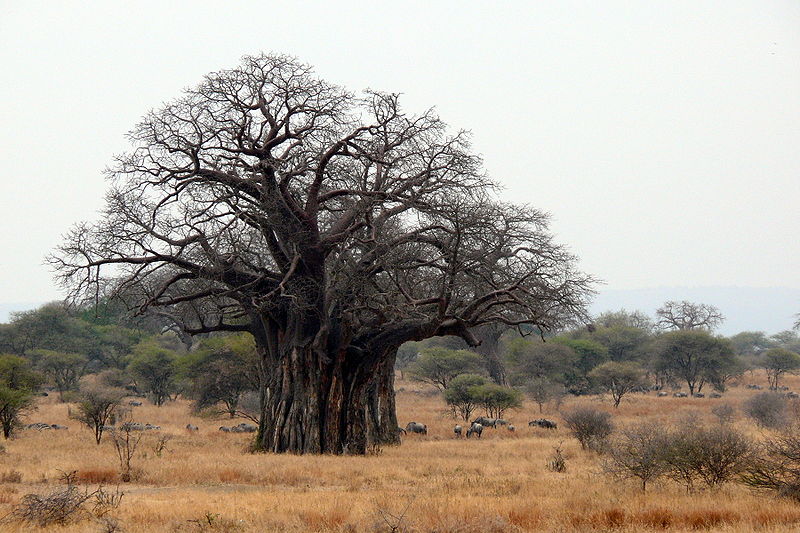
The trees of the African savannah exhibit the same stunning diversity. Different trees produce subtly different ecosystems, which affect the animal population.
As an example, consider Kruger. The mopane savanna merges with bushwillow woodland and stretches of stunted knob thorn savannah.
There are thorn thickets, marula savannah, and large swaths of African savannah that are distinguished by bushes rather than trees.
The Kruger National Park has 12 different African savannah ecosystems. That’s a total of 12 in just one national park!
Baobabs are the most well-known of the trees. A single tree has the potential to live for thousands of years.
They usually stand-alone and use their incredible root system to absorb water and store it in their bulbous trunks.
However, in Tanzania’s Tarangire National Park, the African savannah is almost a baobab forest.
Bushwillow trees grow near rivers, where their roots can sink into permanent water. Termites inhabit jackalberry trees.
The tree provides shelter, and the termites, rather than eating their happy home, aerate the soil with their mounds.
Stunning candelabra trees sprout from a single trunk. Buffalo thorn trees can grow to be over 16 meters tall. Knob thorns are resistant to fire.
Many different browsers enjoy sausage trees, especially the fruit that resembles giant sausages.
Then there are the dozens of mopane trees, which are perennial favorites of animals ranging from duikers to black rhinos.
Acacias
One of the most common savannah trees is acacia. There are hundreds of different African acacias, some of which can live for 11 months without water.
But consider this for twenty-first-century colonialism. Because Australia was successful in a botanical society appeal, only Australian acacia trees can be called acacia!
The first acacia was a scented thorn from Africa. Senegalia will now be used to describe all African acacias. This is not a hoax!
The famous umbrella thorn acacia (oh, silly me, the umbrella thorn senegalia…) sends its roots 40 meters underground to suck up water during the dry season.
The umbrella shape maximizes sunlight capture, and the small thorns prevent animals from eating the leaves.
Except for giraffes, which have developed long necks and tough tongues specifically for the umbrella acacia.
Whistling thorn acacia trees are abundant in the Serengeti. Stinging ants live in the fruit of these trees and keep any potential browsers at bay.
The African Savanna is truly a wonder and it is a nice place to be and visit.
